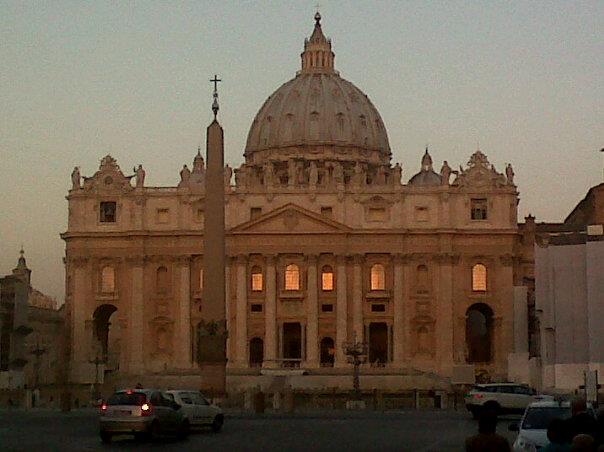
I have friends from every segment of the social spectrum. To some of my Christian friends -both Catholic and Protestant- who do not put a great emphasis on liturgy. All of my Orthodox Christan and Eastern Catholic friends have an expectation from their respective liturgies. And when we look at different religious communities, not all of the pray the divine office and some pray only Lauds and Vespers.
I think for nuns, monks, and those who share monastic spirituality: liturgy is HUGE. Namely
because it is a huge part of the day. I think it must be tough on those who have responded to God's call to the monastic life and are then asked to run parishes or schools. But I digress.
There is one blog that I follow closely call
Sub Tuum. It is written by Br. Stephen at Our Lady of Spring Bank Abbey. He has referred to the "Reform of the Reform" especially with respect to the Mass. This I find to be very interesting. In people's sincere desire for dignified worship, I think there are too many red herrings thrown at people. I have seen websites that refer to experimental liturgies (let us charitably say "well meaning, but poorly executed"). The ones to which have been referred are unfortunate, but they are by no means the norm or common.
As I was growing up the
Novus Ordo was already in all of my local churches in Chicago. I have only attended a handful of
Tridentine Masses. The first two were not even at
Roman Catholic churches. The first one, including deacon and
subdeacon, was IN ENGLISH, and at an Anglican parish in
Staffordshire, England. The second one was at an Old Roman Catholic parish. I have been to a few
Tridentine masses lately. I have seen some celebrated elaborately with amazing choirs. I have seen some rushed through quite quickly. There was one where I think the priest said the Mass in one long breath.
The red herrings are that all
Novus Ordo or Ordinary Form Masses are not these haphazard or even
sacrilegious liturgical travesties. All celebrations of
Tridentine or Extraordinary Form of the Mass are not these glorious dazzling liturgical spectacles. When the Mass is being celebrated with dignity; when the
lectors read well; when the priest's actions are sincere, devout and deliberate: that is a the type of liturgy I want to attend. Whether it is the Ordinary Form of the Mass or the Extraordinary Form of the Mass, it is the Holy Sacrifice of the Mass.
This is my opinion. I would welcome hearing anyone else's opinion.Back to the "Reform of the Reform." This interests me because I see some good results from the renewal from Vatican II. Full, active, and conscious participation in the Mass resonates with me. I have been to Masses in which I felt like an observer. Discussions of the Liturgy in terms of Liberal and Conservative are think do nothing. The Mass is not intended to represent a political party or faction.
I do believe that the intention of the Second Vatican Council was to affect renewal in the church. I also believe a lot of things were done in the name of the council that were mistaken or outright bad. But there are plenty of people who want worthy celebration of the liturgy. I think one of the best examples of this that I ever saw was in the town of Stafford in England. A Polish priest was brought in to celebrate the Mass in Polish. This man celebrated the Mass with such dignity (and dare I say holiness) that he started attracting many people to his Wednesday morning Mass. The priest changed languages from Polish to Latin because the Polish people became the minority at that Mass, but English speakers may not have been the majority. There were Polish, Lithuanian, Indian, Italian, and a variety of others who attended this Mass. The priest told me that he chose Latin as the most pastorally effective language.
That event reminded me of when I went on pilgrammage to Our Lady of Walsingham (also in England). My group was praying the Rosary as we were walking. Among are group was one fellow from Romania and one from Viet Nam. When they were leading the decades, they switched to Latin. So there we were eight of us from six countries praying in one language that we all understood. It was pretty cool.
Again, I would love to hear the opinions of others on this topic.






